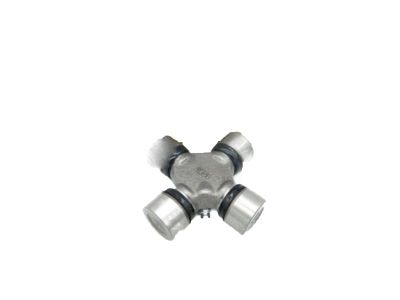×
- Hello
- Login or Register
- Quick Links
- Live Chat
- Track Order
- Parts Availability
- RMA
- Help Center
- Contact Us
- Shop for
- Hyundai Parts
- Hyundai Accessories


My Garage
My Account
Cart
Genuine Hyundai Santa Fe Universal Joint
U-Joint- Select Vehicle by Model
- Select Vehicle by VIN
Select Vehicle by Model
orMake
Model
Year
Select Vehicle by VIN
For the most accurate results, select vehicle by your VIN (Vehicle Identification Number).
2 Universal Joints found

Hyundai Santa Fe Joint Assembly-Universal
Part Number: 49140-4A000$226.83 MSRP: $318.69You Save: $91.86 (29%)Ships in 1-3 Business DaysHyundai Santa Fe Joint Assembly-Universal
Part Number: 49140-4A500$209.29 MSRP: $294.05You Save: $84.76 (29%)Ships in 1-3 Business Days
Hyundai Santa Fe Universal Joint
If you are looking for affordable high-quality OEM Hyundai Santa Fe Universal Joint, then you have come to the prime place. Our website provides a large amount of genuine Hyundai Santa Fe Universal Joint at unbeatable prices. All our parts come backed with the manufacturer's warranty.
Hyundai Santa Fe Universal Joint Parts Questions & Experts Answers
- Q: What are universal joints and how do they function on Hyundai Santa Fe?A:Universal joints are used to mesh two shafts that are spinning with different angular velocities; they are made of a yoke on each side linked by a cross-piece known as trunnion. Both ends of the trunnion consist of cups with needle bearings for the torque load imperative and are connected by snap-rings. The wearing in of needle roller bearings typically produces driveline vibration, noise particularly when accelerating, and at the ultimate stage, metallic squeaking coupled with grating and shrieking as a result of worn bearings. In checking for wear, one may hold an end of a driveshaft and attempt to turn the other end with the other hand while holding the rear axle flange or the front half coupling, if there is much movement between the driveshaft and couplings that indicates a lot of wear. Another method impacts a pry bar into the gap between u-joint and the driveshaft or flange; tries to move the joint radially and axially with the vehicle in gear; any looseness will show. The last check is performed by lifting the shaft: any displacement of the yokes of the joints should be noticeable. In case of any signs of wear on the u joints, replacement of the universal joints with new ones has to be made.













